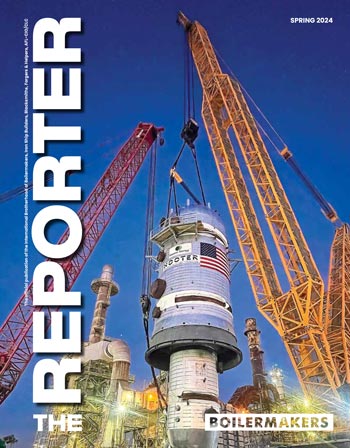Rule-making took nine years, will prevent thousands of injuries
THE OCCUPATIONAL SAFETY and Health Administration published a final rule Nov. 14 clarifying how much of an employee’s personal protective equipment (PPE) must be paid for by the employer. With few exceptions, the rule requires employers to pay for nearly all PPE workers need on the job. Exceptions include ordinary safety-toed footwear, ordinary prescription safety eyewear, logging boots, and ordinary clothing and weather-related gear.
The rule takes effect in May 2008.
Advocates applauded the final rule but expressed frustration because the standard comes nearly a decade after it was first proposed, in 1999.
“OSHA had to be sued by the AFL-CIO in D.C. and the UFCW [United Food and Commercial Workers] to force them to adopt this standard,” said Milan Racic, the Boilermakers’ safety and health specialist.
Because of the long delay, some observers claim workers were killed or injured unnecessarily. OSHA itself stated that the final rule will prevent numerous injuries. In a news release announcing the final rule, the agency wrote: “OSHA anticipates that this rule will result in more than 21,000 fewer occupational injuries per year.”
Chairman of the U.S. House Education and Labor Committee, George Miller, D-Calif., called the delay “unnecessary and unfortunate.”
Edwin Foulke Jr., OSHA administrator, stated that most employers already pay 95 percent of the cost of personal protective equipment. He estimated that paying for additional safety gear covered by the final rule will cost an estimated $85 million but save more than $200 million per year in medical and insurance costs.”
Racic said the rule could still be challenged. “We do not know yet if somebody is going to sue OSHA and attempt to stop enforcement of this standard,” he said.






